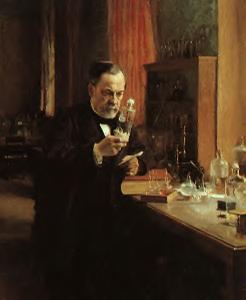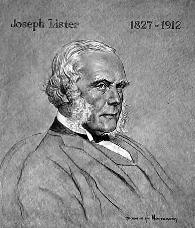Prior to this time, surgeries were performed by giving the patients large amounts of alcohol or opiate drugs, none of which did much to stop the pain.
The only aid up till then was the discovery of "nitrous oxide" or "laughing gas" by Sir Humphrey Davy. By testing it on himself, Humphrey found that it eliminated the pain resulting from surgery. When setting forth his findings, however, doctors were skeptical and reluctant to use it. Even as late as 1844 when an American dentist, Horace Wells, tried it on himself, supporting the same results as originally discovered by Davy, the medical profession still was reluctant to accept the results.
 In 1842, Crawford Long, also an American, from Jefferson, Georgia, noted that when ether was inhaled that people became desensitized to pain. It was years after he conducted his testing that he published his findings. (Picture: Louis Pasteur)
In 1842, Crawford Long, also an American, from Jefferson, Georgia, noted that when ether was inhaled that people became desensitized to pain. It was years after he conducted his testing that he published his findings. (Picture: Louis Pasteur)
The use of ether as an anesthetic was first used in 1846 at the University College Hospital in London. A few years later, James Young Simpson discovered chloroform for anesthetic use. Both of these new drugs became a major milestone in medical history.
Louis Pasteur, a French scientist, came up with the theory from his experiments that it was fungus and bacteria that caused infection and not bad air as originally believed. He also determined through his experiments that these germs could be killed by heat and antiseptics.
 Joseph Lister, a Scottish doctor, believed this information could be used to prevent surgical infections. Rather than amputate a young boy's leg, he had cleaned the wound with carbolic acid, an antiseptic. He then set the bone and bandaged it again using a pad soaked with the same antiseptic. To his colleagues' amazement, the boy's leg healed without infection.
Joseph Lister, a Scottish doctor, believed this information could be used to prevent surgical infections. Rather than amputate a young boy's leg, he had cleaned the wound with carbolic acid, an antiseptic. He then set the bone and bandaged it again using a pad soaked with the same antiseptic. To his colleagues' amazement, the boy's leg healed without infection.
Lister also created a piece of machinery that was used to spray the antiseptic the operating room prior to surgery. This combined with the use of surgical masks and sterilized instruments was the start of a "germ-free" environment in the operating room.
|
|
|
|
|
|
|
|
Back to Intro/Index or Site Map
| | Family Gallery | Servants Parlour | Tour Home | Typical Day | Etiquette | Shopping Trip | |
| | Victorian Christmas | Victorian England Fun and Games | Ashton Library | Victorian Wedding | |
| | Victorian England Overview | Guest Registry | Honorary Victorian | Tours | |
| | Awards Received | Bibliography | |
| | 1876 Victorian England Home | |
Credits below copyright information |
| Contact
webmaster |
| Copyright
1999-2017 All Rights Reserved - B. Malheiro May not be reproduced in any way without express written permission of webmaster. |
Credits:
Background and buttons are the creation of webmaster, B. Malheiro. These images have been watermarked and are not for use on another site. Site authored by webmaster.